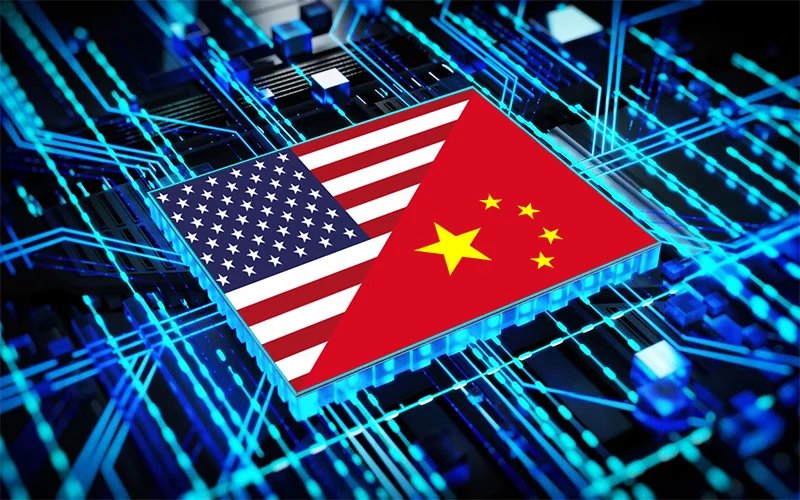Talking Points | Trump 2.0 on China: Recalibration
By the Basilinna Team
Key Talking Points
- A tough approach to China will be a critical part of President-elect Trump’s foreign and economic policy.
- Expect the Administration to have developed a strategy by the time they take office. Cabinet selections will be an early indicator of Trump’s intentions.
- Controls on technology and other emerging technologies will expand. Cooperation however may shift from “climate” to “energy.”
- President Xi called President-designate Trump to congratulate him and emphasize that stability is in both countries’ interest. Trump has been complimentary of Xi and considers that they have a good relationship, which may help mitigate some harsher elements of policy.
Context
As President-elect Trump reenters office, China will be one of his foreign policy centerpieces. And no one should doubt his intentions. While often candidates’ tough rhetoric is softened upon taking office, in his first term, Trump managed to change both the narrative and the policy toward China away from engagement and integrating them into the global community to a limited containment approach.
Today, a tough China policy is one of the few policies that unites Democrats and Republicans. We expect to see a rocky relationship on economic, financial and tech matters, but there is the potential of cooperation on diplomatic initiatives such as Ukraine/Russia and North Korea as well as on energy security.
Tariffs Will be a Key Policy Tool and Bargaining Chip
Trump has stated that he will introduce 60% tariffs on all imports from China with the intent of weaning Americans off cheap products from the country while reducing the bilateral trade deficit. His top trade advisor, former United States Trade Representative Bob Lighthizer, believes tariffs are key to maintaining the strength of the U.S. market through promoting and protecting manufacturing. Lighthizer is expected to maintain an influential role in the new Administration; it will be important to watch who fills the key foreign policy and economic positions as they will be early indicators of the Administration’s approach toward China.
Tariffs also provide the incoming Administration with leverage. China’s sluggish economy is still dependent on strong exports to maintain its target growth levels. The reduction of trade with the United States, still its biggest export market, can’t be off set with increased trade with the rest of the world, especially as other large markets, such as Europe and India, explore similar policies to those of the United States. We expect the Chinese government to continue their charm campaign in Europe to stave-off increased tariffs on key exports such as EVs, to nurture partnerships across the Middle East and Latin America, as well as to support efforts to strengthen multilateral platforms like BRICS.
However, there is speculation on both sides of the Pacific as to whether Trump will follow through with this threat. While tariffs may strengthen the Administration’s bargaining position, they carry potential risks for the U.S. economy. Domestic inflation and supply chain disruptions could follow, impacting prices for American consumers and businesses. To mitigate this, Trump may use the threat of tariffs as a bargaining chip to extract concessions from China for things in the U.S. interest such as additional sales of energy and agriculture products – as he did in his previous term.
Tech Trade Will be Further Controlled
Trump has repeatedly voiced concerns about China’s growing technological prowess, particularly in areas such as 5G, artificial intelligence, and cybersecurity. Given this, the incoming Administration is expected to continue scrutinizing Chinese investments in critical sectors and will push for further restrictions on Chinese technology in the U.S. market. The new Administration is also likely to further expand the outbound investment restrictions on U.S. firms investing in China.
Measures aimed at restricting Chinese access to U.S. technology—such as export controls on critical components like semiconductors—are also likely to remain in place, if not be expanded, as a means of slowing China’s technological rise. But given Trump’s past stormy relations with U.S. allies, coordination with other countries, especially in Europe and Japan who are already balking at expanded U.S. controls, will be challenging. This lack of cooperation could further disadvantage U.S. tech companies.
At the same time, it is unclear how the Trump administration will target some Chinese tech companies already facing sanctions or operational restrictions in the U.S. All eyes are on TikTok, which has become a symbol of the broader tech conflict. Trump has already stated that he won’t ban TikTok, in part because it would benefit Facebook, which he considers “an enemy of the people.”
Selective Engagement
Trump’s approach to China in his upcoming term will likely feature a mix of aggressive economic measures, particularly in trade and technology, alongside a pragmatic openness to collaboration where it serves U.S. interests. Under Biden, the focus was on cooperation in climate; under Trump, we are likely to see a return to cooperation on energy.
Trump’s familiarity with the diplomatic complexities of U.S.-China relations suggests that he may seek a selective engagement policy. By balancing assertive stances with occasional diplomacy, the Administration may aim to recalibrate the relationship (again) without triggering an outright breakdown in ties. In other words, while there will be stormy waters ahead, the new Administration will likely continue to maintain a floor in the relationship as seen with President Biden while engaging on issues of priority such as trade and technology.


